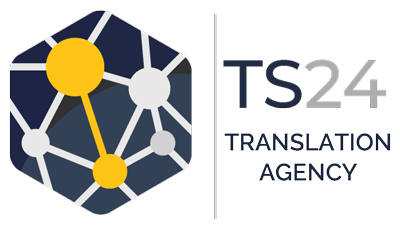The Future Of Translations: Where Are We Heading As An Industry
Imagine a world where language is translated as we speak. This is the future of translations, but not the future of language translation agencies. The influence of machine translation will inevitably have an impact on the future of translation agencies, but it will not destroy the industry.
Technology has a direct impact on a broad range of industries, and the translation industry is no exception. Neural machine learning has improved significantly over the past few years, and with the emergence of online translation machines and instant-translator tools, there is a question mark over the need for linguists and translation agencies.
Translations tools have largely improved the experience of consumers. Online tools such as Google Translate and Skype Translator are good enough for people to have a conversation in different languages, but fall short of the line for marketers and other professions that require accurate translations such as the medical and legal fields.
Neural machine learning does offer promise, however. And with the advancements of translation tools over the last few years alone, what will the future bring to the translation space as a whole, and translation agencies as the service providers? Where exactly is the translation industry heading?
Translation is global
Global demand for professional translations has been steadily growing for over a decade now. With eCommerce becoming more popular among consumers, the borders for shopping and global trade are practically non-existent.
With this in mind, the opportunities for language translation agencies and freelance linguists look more promising than ever.
The world is buying and selling products and services online. But without professional translators, business transactions would be difficult, if not impossible. As global brands have discovered, 75% of consumers are more inclined to buy products from a website which is available in their native language.
In the past, brands have found to their cost that scrimping on translations is more likely to damage marketing campaigns than help protect your budget. By protecting budget spend, marketers risk losing more on revenue.
Translation agencies are finding new ways of providing customers with effective translations in an increasingly competitive market. And despite the draw of free online machine translations, brands recognise that professional translations produced by a human improve the comfort level for consumers.
Whilst translation software and neural machine learning threaten to impact the future of translation agencies, technology also presents translation service providers with the capacity to streamline work processes and deliver what customers want the most; cheaper and faster translations.
Machine translations, without a doubt, save time and money, but will never be able to offer the same level of accuracy, reliability and creativity as human translators. Although translation agencies may suffer in the immediate future as more companies turn to technology, the long-term future is brighter than ever.
Professional translations often, if not always, go beyond language. Localisation and transcreation are not the same as translation. Machines translate. Linguists also apply a creative spark. Nothing can replace original creativity. Will machines ever have free will to create something they are not programmed to do or to understand a country’s culture in relation to the content?
The overriding issue with machines is that they are not able to fully understand the context, they do not convey emotion and they do not understand the nuances and idioms of a language. These are all important aspects of language translation. And quite frankly machines are limited.
Man vs. machine
There is no question that machines are having a significant impact on a broad scope of industry sectors. They have even made a huge difference to how language translation agencies are able to improve their services.
And there is more to come from technology. Experts in the language translation space expect the landscape will change significantly – and as early as 2022.
The 2017 Conference on Empirical Methods on Natural Language Processing held in Copenhagen also underscored just how important language translation is to major technology brands. The event was sponsored by big-hitters including Google, Microsoft, Facebook, and Apple.
The tech giants have spent millions of dollars attempting to reinvent the translation profession. Online tools are accessible to internet users all over the world. And whilst these companies offer their translation tools for free, it is only under the pretence of collecting data they can use for their own benefit.
Translation machines use artificial intelligence with deep learning capabilities. The only way to improve their tools, is for the tech companies to gather sufficient quantities of expert translations to help improve the quality of their translations.
Small translation agencies that take advantage of these tools are essentially designing their own downfall. Without access to reams of professional translations, machine translation tools do not have the scope to improve. Emotion-fuelled copy can be stolen, even if it is copyrighted.
Translation agencies can better protect themselves by using translation software that is kept private. As translation tools become more and more accurate, more agencies will realise the value of treating professional translations as intellectual property.
Translation technology falls into two distinct categories; machine translation (MT) and computer-assisted translation (CAT). MT principally relies on software that is installed on a computer and renders the target language into a chosen language. The two most common types are Rule-Based Machine Translations (RBMT) or Statistical Machine Translations (SMT).
RBMT is built on the premise that language is based on grammatical and syntactic rules. They are programmed with a robust bilingual dictionary that can be added to by end-users – professional translation firms. This gives you the potential to create a unique library of accurate translations developed by specialists linguists all over the world.
SMT, on the other hand, assess each segment of the source text and renders a translation that is most probable. The software selects the highest statistical probability which makes it more versatile and flexible than RBMT.
However, as any professional linguist will tell you, neither process is 100% percent accurate. Even a combination of the two would not hit the mark every time. On top of that, machines lack a sense of humour and the capacity to identify a target audience in the same way as human translators can.
So, what exactly do these tech giants hope to achieve by developing translation tools?
Translation tools for travellers
Free translation tools may be appealing, but, to date at least, they are only suitable for travellers or talking to friends and family members in a foreign language.
Translation agencies may have to think about creating other revenue streams or using marketing strategies that raise brand awareness. Translation tools are essential for travellers who do not speak the local language and a spate of useful mobile apps have emerged in recent years.
However, many of the apps are not accurate – because they have been developed by companies that rely on machines to learn translations rather than programmed by professional linguists. Because the same word can mean different things, machines make mistakes. Until they learn context whereby they can distinguish word meanings, tools will always have an Achilles heel.
Hundreds of millions of people are using Google, Skype and Facebook translation tools every day. Whilst it is impossible for professional translators to serve billions of queries, 99% of the global market is being gathered in by Google et al.
And people are rushing into their open arms. Google translates more words in one minute than a language translation agency does in a year.
But for the hype surrounding the advanced technologies at the disposal of these firms, manufacturing a universal translator is virtually impossible. These firms do not have the expertise. The shortcomings are reflected in the translation tools they let loose on the public.
Expertise is an area in which language translation companies have the edge and a head start. The major technology brands can smell money in translation, and when they start charging for their tools, there will be a level-playing field for translation agencies to create additional revenue streams.
How machine improves the translation industry
Machine translation tools have only scratched the service of translations. However, they still make a significant impact on language service providers that need to find solutions to meet the demands of customers that want a speedy turnaround and a cost-effective service.
The mission of language translation agencies of cause is to help the world communicate better. Machine translations may be quick, but they are not accurate. Yet although the quality is lacking they are useful for providing a skeleton for linguists to work with.
Translation technology has matured quickly in the last few years. Since tech companies started using machine-learning algorithms that collect data from a wide variety of sources, machine translations have significantly improved.
Subsequently, language translation agencies have been able to deliver content faster and at lower costs. The database of translations agencies can collect themselves also means they can often complete a project without having to consult a trained linguist – therefore saving themselves time and money which is extended to clients.
There are economical aspects to consider of course. Translation software does require an up-front investment. Small businesses have to weight the projected return-on-investment in relation to current systems. On the other hand, firms that fail to keep in touch with industry trends, fail completely.
There is little doubt that the translation industry is heading towards a computerised future even more than it is now. The firms that survive will be the firms that embrace change.



